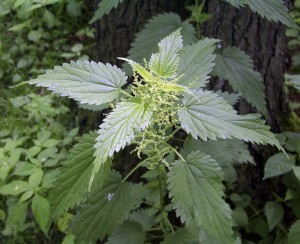Increase testosterone levels naturally while protecting prostate health and limiting hair loss
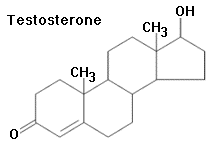
Modern man experiences certain physiological events with extreme difficulty and emotional discomfort, which are considered almost inevitable and are faced with retirement, which occur in his life, such as:
- performance degradation due to decreased TESTOSTERONE level
- enlargement of the prostate with problematic symptomatic set
- onset of baldness
These three events, which many men experience in a traumatic manner, are associated with fairly well-known hormonal mechanisms that are closely linked in a causal relationship.
Much remains to be explained by science, but it has now been established that the main stages of production (in excess and in defect) of androgenic hormones in humans are involved in the manifestation of the problems described above.
Around 40-50 years there is a gradual physiological decline in TESTOSTERONE production , followed by a number of general disorders that reduce psychophysical performance. 360.
There is a decrease in muscle mass with frequent simultaneous increases in fat mass, strength and resistance to stress, training shorter, decreased libido and work efficiency in every area of life, definition and definition also declining.
All this happens because people around the age of 40-50 do not have an adequate level of androgenic hormones, the lack of which also contributes to the establishment of a tendentious-depressive state (low energy and poor vitality, loss of rational ability to make decisions, tendency to despondency), sometimes alternating with manifestations of unmotivated nervousness, etc.
Subjects around the age of thirty may still experience a decrease in TESTOSTERONE levels with all the associated problems, but for problems other than those over 40-50 years old, such as chronic stress at work, stress caused by difficulties in preparing for university exams, emotional, emotional and other stresses.
This decline in TESTOSTERONE levels around the age of thirty has a biological significance different from the biological significance over 40-50 years of age, as it is caused by external factors (such as the environment, such as work, school, etc.) and internal (emotional, characteristic). etc.), which can be corrected and, therefore, do not affect the correct resumption of TESTOSTERONE production by gonads, and therefore the productivity deficit can be more easily restored.
Unfortunately, after forty years, the decline in TESTOSTERONE is inevitable with its psychophysical “Decline”.
A decrease in optimal levels of TESTOSTERONE compared, for example, to the levels of a 25-year-old man in excellent shape, affects not only the body (as it is better known), but also the character and chain reaction in which the more you feel tired and the easier it is to react, alternating between pessimistic thoughts and a suppressed attitude towards nervous relationships.
Recent observations have shown that mnemonic and cognitive abilities decline with decreasing TESTOSTERONE levels and therefore may benefit from restoring optimal levels to the same level.
Why does the decline in TESTOSTERONE levels occur physiologically around 40, not yet fully it is known, but generally known, that this occurs in all men a year ago, a year after, and that a decrease in TESTOSTERONE levels is inevitable without external intervention.
TESTOSTERONE, which is responsible for the aforementioned functions in humans, is an androgen hormone, which is produced 90-95% at the testicular level and the rest at the adrenal level.
TESTOSTERONE itself has mainly anabolic effects, with stimulation of protein synthesis, as it increases the activity of numerous enzymes involved in protein metabolism, as well as facilitates the transport of amino acids across cell membranes.
Other effects of TESTOSTERONE are to stimulate the synthesis of erythropoietin (necessary for the production of red blood cells) and influence behavior (promotes self-confidence, determination, determination).
TESTOSTERONE performs its functions only in free form , that is, when it is not bound to proteins responsible for its transport in blood and tissues. These are SHBG (sex hormone binding globulin), albumin and transcortin . The latter two have medium-low affinity for TESTOSTERONE, so its transport is mostly SHBG driven.
Beginning at the age of 45, the activity and synesthesia of SHBG also increase by 40%, followed by a decrease in the free fraction of TESTOSTERONE, which is biologically active.
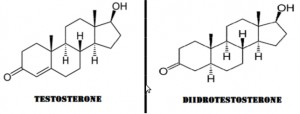 Circulating TESTOSTERONE is almost completely converted at the level of androgen-dependent target tissues into DHT (dihydro-TESTOSTERONE) by the enzyme 5-alpha-reductase, which is present in the prostate gland, seminal vesicles, kidneys, sebaceous glands, skin, brain and other tissues.
Circulating TESTOSTERONE is almost completely converted at the level of androgen-dependent target tissues into DHT (dihydro-TESTOSTERONE) by the enzyme 5-alpha-reductase, which is present in the prostate gland, seminal vesicles, kidneys, sebaceous glands, skin, brain and other tissues.
In adults, DHT is required for androgenic effects on the skin (maintaining secondary sexual characteristics such as hair distribution, skin coloration of the penis and scrotum) and accessory genital organs such as the prostate and vesicles. seminal, enhanced by the effect on the seminal fluid and its content in fructose, citrate and acid phosphatase.
For normal trophism, the prostate gland needs a constant supply of DHT. With age, under the influence of factors still unclear, the prostate increases in volume, but the total DHT content decreases, as well as the secretory capacity of the gland. The decrease in DHT is physiologically balanced by an increase in androgen metabolism towards DHT (the activity of 5-alpha reductase is increased threefold) and an increase in DHT binding sites in the prostate gland. Thus, the gland becomes more sensitive to DHT with age, which explains why, after formation, prostatic hypertrophy persists in the presence of normal or low TESTOSTERONE levels.
DHT is also not very much appreciated in men, as hair loss , gradually turning hair into fleecy hair (fine hair), with thinning hair in the upper and temporal areas (androgenic alopecia), through exposure to DHT on the androgen-dependent areas of the pilosebital unit.
A very small part of the circulating TESTOSTERONE (0.3%) is converted to estradiol by the aromatase enzyme located in adipose tissue, liver, muscles, etc. This can lead in the case of overweight and obesity (due to an increase in aromatase ) conversion of a larger proportion of circulating TESTOSTERONE to estradiol with a subsequent and further decrease in biologically active levels of TESTOSTERONE and a further decrease in libido and performance in general.
As explained above, it is important to understand how careful the choice of substances must be that can naturally increase TESTOSTERONE levels, as an increase in this hormone can exacerbate prostate and hair problems.
Therefore, it must be associated with nutritional physiologically increase levels of TESTOSTERONE, a substance that can counter the effects of DHT, which is a hormone that promotes prostate hypertrophy and hair loss.
Thus, the nutrients used, working in synergy, will maximize the benefits of muscle anabolism, libido, overall performance, preventing and preventing the onset of prostate disease. and scalp. The various substances that nature makes available to us, when used correctly, fulfill the above functions.
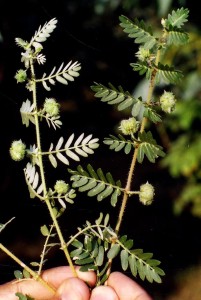 First of all, TRIBULUS TERRESTRIS (titotalo 40% in saponins, extracts titrated to 90% in saponins were found), is a plant that grows mainly in India. Contains substances called saponins, which are able to stimulate the pituitary hormone LH, which in turn stimulates the synthesis of TESTOSTERONE with a subsequent increase in metabolic manifestations that depend on TESTOSTERONE itself (increased muscle mass, increased athletic performance, increased libido and production). sperm, etc …). The effects of Tribulus Terrestris are due to the presence of active saponins, including protodioscina (a saponin with a furostanol structure), which, apparently, should include the effect on LH.
First of all, TRIBULUS TERRESTRIS (titotalo 40% in saponins, extracts titrated to 90% in saponins were found), is a plant that grows mainly in India. Contains substances called saponins, which are able to stimulate the pituitary hormone LH, which in turn stimulates the synthesis of TESTOSTERONE with a subsequent increase in metabolic manifestations that depend on TESTOSTERONE itself (increased muscle mass, increased athletic performance, increased libido and production). sperm, etc …). The effects of Tribulus Terrestris are due to the presence of active saponins, including protodioscina (a saponin with a furostanol structure), which, apparently, should include the effect on LH.
Therefore, it is important that the Tribulus Terrestris based nutritional supplement is titrated in effectively active saponins or in protodioscin, and not in generic saponins, many of which are completely unrelated to the stimulation of ENDOGEN ‘LH.
Therefore, it is necessary to assess whether a subject can benefit from using Tribulus Terrestris that the extract is titrated with protodioscin (there are currently extracts titrated up to 40% protodioscin, not to be confused with titration at 40% in generic saponins). p>
Numerous observational studies have observed that Tribulus Terrestris causes an increase in TESTOSTERONE levels in stressed subjects, also due to excessive exercise and low TESTOSTERONE levels, while subjects in shape and with normal TESTOSTERONE levels are also more active. Tribulus Terrestris extract does not cause major changes.
This shows that Tribulus is able to optimize hormonal structure as an adaptogen in stressed subjects, and therefore this plant does not disrupt hormonal balance like an anabolic steroid does, but helps a person find your hormonal balance.
>
Tribulus, if used correctly and prescribed by an experienced physician, can rightfully be considered a “hormonal optimizer.” In practice, Tribulus Terrestris (as fenugreek extract) is a typical example of endogenous stimulation. hormonal, which is opposed to the EXOGENIC substitution pathway (for example, the use of testosterone as such is indicated in substitution therapy for some pathologies, and is also described in official guidelines, while, on the contrary, for use and purposes of a completely different type, this is DOPING).
Even in the event of an overdose of this plant, the TESTOSTERONE values will remain within the normal range: TESTOSTERONE will at least not exceed, in the cases already studied, the levels that should be considered doping for all the numerous health problems that the Author has already described in numerous articles over the years.
Tribulius Terrestris (studied by the writer back in 1997-98) is interesting, but not wonderful; nevertheless, it could be of great help to those whose endogenous testosterone levels tend to be close to the minimum limits.
Already 15 years ago, given the scarce bibliography of that time, I asked for information about all my possible contacts; In the years that followed, I collected numerous testimonies about this passage, with conflicting results, from enthusiasts to those who claimed to have failed.
In the case of herbal extracts, in addition to the subjective variability of response from case to case, there is always the quality of a particular herbal extract that needs to be verified, as explained earlier.
After years of collecting actual evidence, on average, it has been observed that after 2-3 days, the first results appear (both in terms of sexual activity and in terms of mental action or increased libido).
The recommended healthy dose is 750-1250 mg , divided into several daily assumptions (the dose may vary significantly according to the opinion of your doctor). … The different Tribulus Terrestris extracts investigated over the years had different colors (from brown to gray to green …), different tastes (some very salty, others almost tasteless), different solubility…. It doesn’t take any expert to realize that even with this simple data, the various excerpts were not the same.
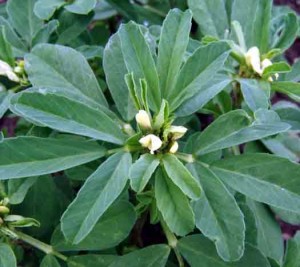 Another active ingredient that can increase TESTOSTERONE levels is FENUSID, found in GREEK HAY (testofen-extract) titrated to 50% (fenuside). Fenusid is able to increase TESTOSTERONE levels and performs an action similar to TESTOSTERONE by binding to binding sites (receptors) of TESTOSTERONE and thus mimicking their action. This causes an increase in muscle mass and libido. The recommended dosage is 300 mg, but can be changed based on medical opinion.
Another active ingredient that can increase TESTOSTERONE levels is FENUSID, found in GREEK HAY (testofen-extract) titrated to 50% (fenuside). Fenusid is able to increase TESTOSTERONE levels and performs an action similar to TESTOSTERONE by binding to binding sites (receptors) of TESTOSTERONE and thus mimicking their action. This causes an increase in muscle mass and libido. The recommended dosage is 300 mg, but can be changed based on medical opinion.
In order to counteract the effects on the prostate and hair caused by an indirect increase in the amount of TESTOSTERONE, which is converted to DHT, nature offers us, in particular, two plants, SERENOA REPENS (saw palmetto) and NETTLE (urtica dioica), or the classic stinging nettle of our fields, has long been known for its effect on hair.
SERENOA REPENS, like URTICA DIOICA, is able to inhibit the conversion of TESTOSTERONE to DHT and reduces the activity and transport of DHT itself. Consequently, by decreasing conversion to DHT, this herb can increase the availability of free TESTOSTERONE levels with a consequent increase in its anabolic functions, with net improvements in athletic and sexual performance.
By reducing DHT, it also has beneficial effects in people with prostatic hypertrophy and in preventing androgenic alopecia.
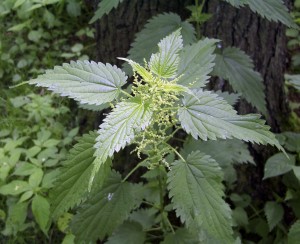 NETTLE (urtica dioica) contains components that can bind to SHBG (sex hormone binding globulin) instead of TESTOSTERONE, saturating binding sites that are not more accessible to TESTOSTERONE.
NETTLE (urtica dioica) contains components that can bind to SHBG (sex hormone binding globulin) instead of TESTOSTERONE, saturating binding sites that are not more accessible to TESTOSTERONE.
Thus, you get a large share of the free TESTOSTERONE that can do its job. Nettle also inhibits DHT binding to DHT binding sites on the prostate and reduces the action of the enzyme 5 alpha reductase, which is responsible for converting TESTOSTERONE to DHT. Thus, nettle is beneficial for naturally increasing testosterone levels and preventing benign prostatic hypertrophy and hair loss.
Supercritical dry extract of Serenoa repens fruits in CO2, titrated to 45% in fatty acids (320 mg), and dry extract from nettle root, titrated in 0.8% of the total amount of sterols, calculated as beta-systosterol (120 mg ) are indicated for men in their 40s who want to prevent prostate hypertrophy and thinning hair and improve physical, sexual and behavioral abilities by naturally increasing, without forcing synthesis, circulating TESTOSTERONE levels through the synergistic association of plants such as Tribulus terrestris and Fenugreek-TESTOFEN (a special patented extract titrated in fenusid, while normal fenugreek contains very little fenuside).
As a result, the use of these titrated extracts allows you to achieve the maximum ratio between increasing and optimizing TESTOSTERONE while maintaining prostate health and slowing down hair loss.
Tribulus terrestris, testofen, serenoa repens and stinging nettle are part of this class of nutritional supplements designed to enhance male performance 360 °, providing both the man and the doctor with effective tools to improve their health. Psychophysical well-being, increased strength that reflects the characteristics of a person in excellent health, that is:
- good muscle mass
- strength
- Resistance
- psychophysical efficiency
- libido
- satisfactory sexual behavior
by minimizing the limitations that physiological changes that occur in people around the age of 40 make them less efficient and less satisfied.
These herbal extracts can be taken, according to medical recommendations, with a large margin of safety, in fact, they do not change the hormonal mechanisms that nature considered anabolic steroids for humans, etc., but they help to optimize the functions that nature itself has created.
Thanks to biotyped training and individual nutrition, the combination of these extracts can improve both psychophysical performance by 360 ° and increase muscle tone; With heavy weight training suitable for micro-breaking muscle fibers, you can also contribute to significant gains in muscle mass, even over 50!

